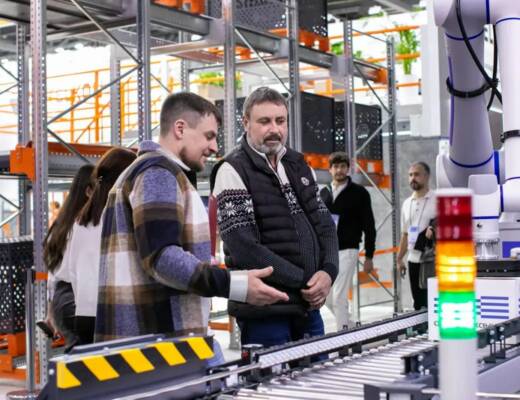Some startups believe that nuclear fusion will arrive in ten years thanks to technological advancements and an increase in private financing.
Recent technological advances and an increase in private financing have rekindled interest in nuclear fusion, the atomic reaction that powers our sun and other stars.
Researchers believe that the Earth’s ability to reproduce the process could provide clean energy for the entire world. Scientists have been unable to achieve this goal for decades, with some joking that nuclear fusion will never happen.
Some private companies now believe that fusion could be a viable and large-scale energy source in the 2030s. Although many people believe that it won’t be possible until the second half-century, investors around the globe are embracing optimism about the long-term and predicting that it could pay off.
In the last few years, many startups that promise fusion have emerged. A report by U.K. Atomic Energy Authority and the Fusion Industry Association, there are at least 35 private companies operating infusion around the globe, of which 18 have received private funding totaling $1.8 billion. About half of the 23 companies surveyed were founded within the last five years.
Nuclear Fusion
Nuclear fusion (cold reaction), the lesser-known and opposing reaction to nuclear fission, occurs when two lighter atomic nuclei combine to create a single heavier one. This process produces huge amounts of energy and emits very little radioactivity.
Fusion reactions occur in plasma, a hot charged gas composed of ions and free-moving electrons. It requires temperatures of more than 100 million degrees Celsius for the nuclei to overcome their electric repulsion and collide. Deuterium and tritium are the main fuels for nuclear fusion. One is the key element of water; the other is possible through the reaction with lithium.
“The problem with fusion is that it’s impossible for it to have an accident; it has no long-term waste, and it can’t be weaponized,” Christopher Mowry, chief executive officer at General Fusion, a Canadian startup supported by billionaire Jeff Bezos. It eliminates the problem of energy security that has plagued the world for over a century.
However, it is still not possible to create fusion systems capable of producing more energy than they consume in self-sustaining reactions. This is due to the difficulties associated with high temperatures, density, and pressure that are required to trigger the process. Scientists can only then move on to building a power-generating reactor once they have mastered the process.
Fusion vs. Fission
Although they sound very similar, the two types of nuclear reactions are not. Let’s take a closer look at the differences.
Fission
A neutron is responsible for splitting an atom in nuclear fission. This releases energy as well as smaller and more neutrons. Fission is the process that creates nuclear bombs and power plants. It also produces radioactive material, and it carries the risk of accidents.
Fusion
Fusion is the process of combining the nuclei with light atomic elements’ nuclei in super-heated plasma and releasing a helium nuclear nucleus or a neutron. Although still experimental, fusion reactors could produce more energy than fission stations without exposing the body to radioactive byproducts and posing meltdown risk.
ITER is the world’s largest fusion program. It is a $22B multinational government-funded project located in southern France. Although it does not produce electricity, ITER has demonstrated the feasibility of fusion through a net energy gain and sustained fusion for longer periods.
The tokamak is the central component of the experiment. It is a large, cylindrical machine that is roughly the size of a doughnut. This is where the fusion reaction will take place. This device is used to perform magnetic confinement, which squeezes plasma using magnetic fields.
Scientists claim that the project, despite some delays, is on track to produce super-heated plasma by 2025 and then achieve full fusion ten years later. Next is a demonstration power station that will supply fusion electricity to the grid.
Tim Luce is the head of science and operations at ITER. He doesn’t believe fusion power will be a significant contributor to the energy mix until 2070. He says that it takes around 30 years for any energy source to reach at least 1% of the global energy market share.
Startups are more optimistic.
Massachusetts Institute of Technology and Commonwealth Fusion Systems are developing a smaller tokamak device. They claim it will demonstrate net energy from fusion by 2025. They hope to build a fusion power station that can produce electricity in the 2030s.
The company celebrated a major milestone in magnetic-confinement fusion when it tested a high-temperature, superconducting electromagnet. It produced a magnetic field strength of 20 teslas and consumed only 30 watts of electricity. The magnetic field strength of the plasma improves the confinement and increases the rate of fusion energy generation.
General Fusion
General Fusion, a Canadian startup, plans to construct a demonstration power station at the U.K. Atomic Energy Authority site in Culham. Operations will begin in four years. The plant will demonstrate magnetized Target Fusion, which is a concept that employs a series of powerful pistons to compress plasma into nuclear conditions. It also incorporates some features of magnetic confinement.
The CEO of the company, Mr. Mowry, said that it’s possible that fusion could be on the grid by the 2030s.
However, some scientists consider this timeline too optimistic. Frederick Bordry, the former director for accelerators technology at CERN (the European Organization for Nuclear Research), says that having nuclear fusion-powered electric grids by 2030 would be unrealistic. This is because the technology needs to be further developed and must go through licensing and regulatory processes.
He says that “I am willing to bet a lot” and that fusion will not become feasible until 2050-2060.
Others criticize the hype around nuclear fusion as illusory and distracting because the technology will not be available in time to slow global warming. L.J. says that nuclear fusion will not have an impact on the global carbon-free energy mix by this century, let alone 2050. Reinders, a retired scientist, and the author points out the inconsistency of substantial results over almost 70 years.
Is it worth the effort?
Even though cold reaction is still a far-fetched technology, its supporters believe it’s worth exploring. They say that while solar and wind are becoming more efficient and competitive each year, the world still requires a stable source of on-demand electricity that’s not dependent on weather conditions, particularly in developing countries.
Mr. Luce of ITER says, “If we want to survive as a civilization for more than 100 years, it would be extremely foolish to only invest in things that can pay off in 20 years.”
A few large oil-and-gas companies have made bets on nuclear fusion, hoping to tap into new clean-energy markets. This is despite mounting pressure to reduce carbon emissions.







